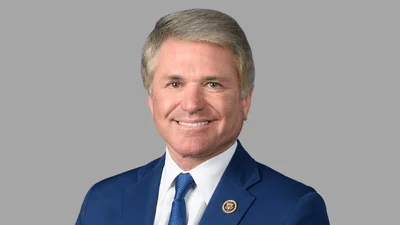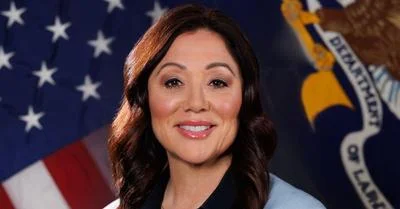Mr. President, I’d like to briefly respond to my friend from North Dakota, the Chairman of the Budget Committee. The Chairman was responding to my remarks on small business and the effects of proposed 20% higher marginal rates on small business owners. The budget brought before us raises taxes on small business owners. There can be no question about it. Here’s how it works.
The President’s Budget proposes to raise the top two marginal rates from 33% and 35%
to 40% and 41% respectively, when PEP and Pease are fully reinstated. President Obama’s marginal rate increase would mean an approximately 20% marginal tax rate increase on small business owners in the top two brackets.
Many of my friends on the other side will say that while they agree that successful small businesses are vital to the success of the U.S. economy, the marginal tax increases for the top two brackets will not have a significant negative impact on small businesses. The Chairman appears to fall into this camp.
Proponents of these tax increases, like the distinguished Chairman, the Senior Senator from North Dakota, seek to minimize their impact by referring to Tax Policy Center data that indicate about 2 percent of small business filers pay taxes in the top two brackets. In testimony before the Senate Finance Committee, Dr. Bob Greenstein, director of the liberal think tank,
Center on Budget Policy and Priorities, also used that figure. Moreover, Secretary Geithner has testified that this Treasury Department agrees with that figure. They argue that a minimal amount of small business activity is affected.
However, there are two faulty assumptions to this small business filer argument.
The first faulty assumption is that the percentage of small business filers is static. In fact,
small businesses move in and out of gain and loss status depending on the nature of the business and business cycle. The non-partisan Joint Committee on Taxation has indicated that, for 2011,
approximately 3 percent of small business filers will be hit by these proposed higher rates.
These statistics compare to a 2007 treasury which showed 7% of flow-through business owners paying the top rate. In the latest analysis, when the impact of the alternative minimum tax
(“AMT") is fully included, that percentage may drop some.
Small Business Administration (“SBA") data provide evidence of the dynamic nature of small business. You can find that data on the SBA website in its frequently asked questions discussion. The website is www.sba.gov/advo According to SBA, 67% of small businesses survive for 2 years; 44% of small businesses survive at least 4 years; and 31% of small businesses survive at least 7 years.
The second faulty assumption is that the level of small business activity, including employment, is proportionate to the filer percentage.
According to NFIB survey data, 50% of owners of small businesses that employ 20-249 workers would fall in the top two brackets. You can see it right here on this chart. According to the SBA, about two-thirds of the nation’s small business workers are employed by small businesses with 20-500 employees.
Newly developed data from the Joint Committee on Taxation demonstrates that 55% of the tax from the higher rates will be borne by small business owners with income over $250,000.
This is a conservative number, because it doesn't include flow-through business owners making between $200,000 and $250,000 that will also be hit with the Budget's proposed tax hikes.
Now, as is frequently the case in debate, the proponent of an idea seeks to change the nature of the debate by changing the question. We witnessed a bit of that this afternoon.
Notice the distinguished Chairman did not dispute the basic thrust of the points I raised.
Instead, he said, we, on this side, used an unfair or inappropriate definition of small business. He cited examples of former Vice President Cheney and Microsoft founder Bill Gates, Jr. The point seems to be that the 750,000 flow-through small business owners, again those most likely to expand or contract their workforces, who will be in the bulls-eye of the 20% higher marginal rates should be ignored. We should focus instead on one or two examples. The point seems to be that it’s fine to target the large group of small business owners if you can find a Cheney or Gates example.
On this point, I direct the distinguished Chairman and the full Senate to the Treasury Conference on Business Taxation and Global Competitiveness Background Paper. It was put out on July 26, 2007. The current Treasury is spending some time updating this data and will be incorporating the full effect of the alternative minimum tax (“AMT") for 2011. If colleagues examine the study at page 20, table 3.3, they’ll find an insightful analysis. The study sorted Treasury data for flow-through entities. The analysis sorted the data to isolate active manager/owners from the broader pool of all flow-through filers. When so sorted, Treasury found that the lion’s share of income and tax was still born by those manager/owners. I ask consent to enclose a copy of the Treasury table in the record.
Even the Tax Policy Center, an institution in accord with President Obama and the Congressional Democratic Leadership’s goal of raising the top rates on small business, shows a large slug of active small business income in taxpayers in the top two brackets. I ask consent to include a TPC chart in the record.
The proponents of a tax increase of up to 20% in the marginal rates of small business owners should bear the burden to disprove the concerns those on our side have raised. Perhaps they could work with Senator Snowe, Senator Cornyn and others to craft an exception that shields the small businesses that employ two-thirds of all small business workers from the tax increase. Pointing to an extreme example, like a Vice President Cheney or a Bill Gates, Jr., may make great sound bites for politics.
It, however, will not amuse the small business owners who’ve worked hard to build a business. It won’t amuse the workers they need to lay off. It won’t amuse the suppliers they have to curtail purchases from. The bottom line is the budget contains a tax increase that is aimed at small businesses most likely to expand or contract. That tax increase is significant and real to those small business owners. They, not the politicians voting in the tax increase, will have to deal with the added tax burden.
Last week, a strong bipartisan group of 84 Senators agreed there’s a problem here. We’re raising taxes on Small Business America. We ought to be careful. Throwing out a red herring involving Vice President Cheney or Bill Gates, Jr. doesn’t deal with the problem we’ve raised. I yield the floor.









